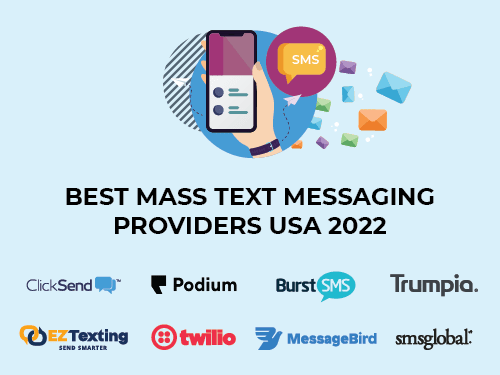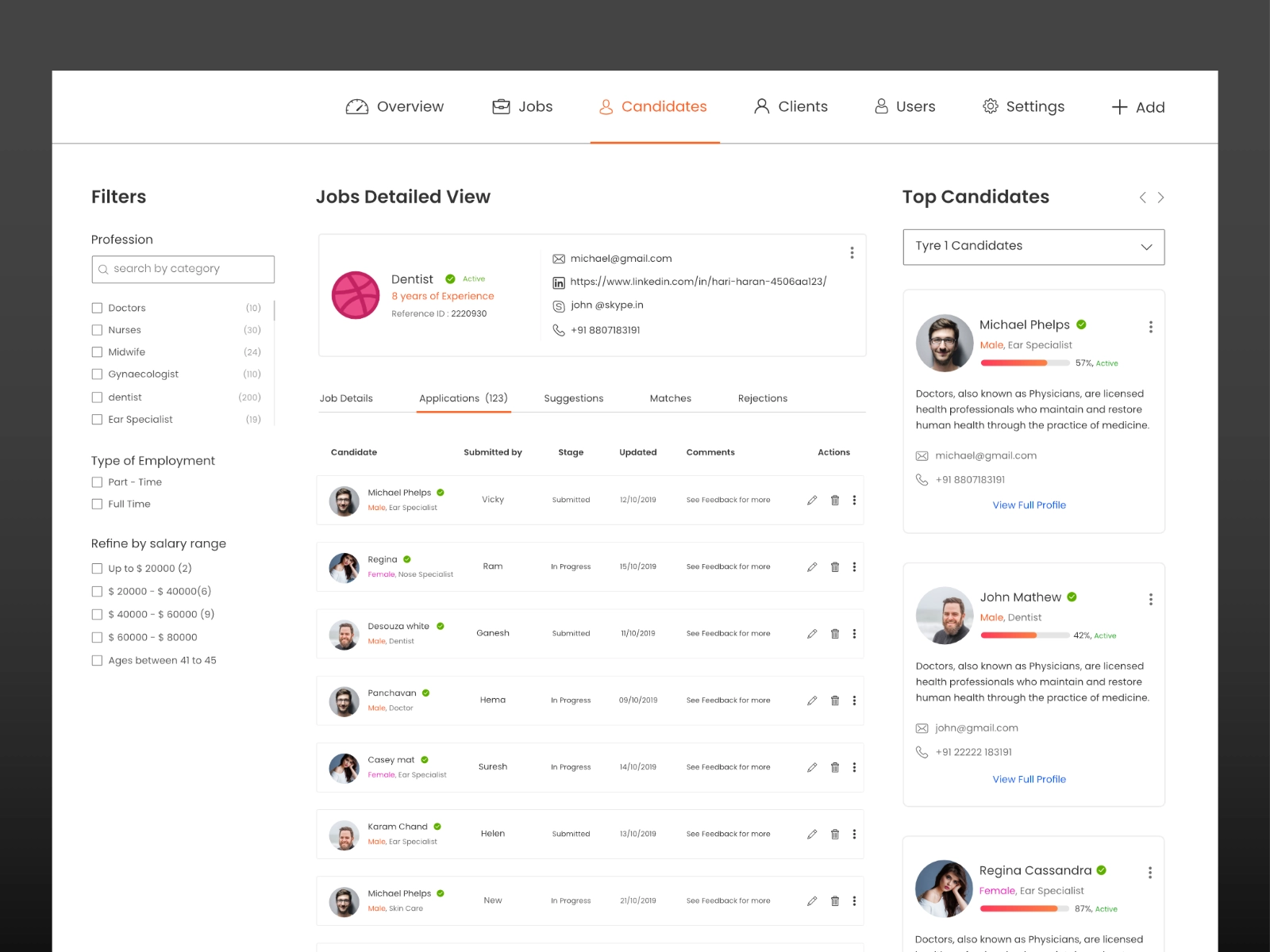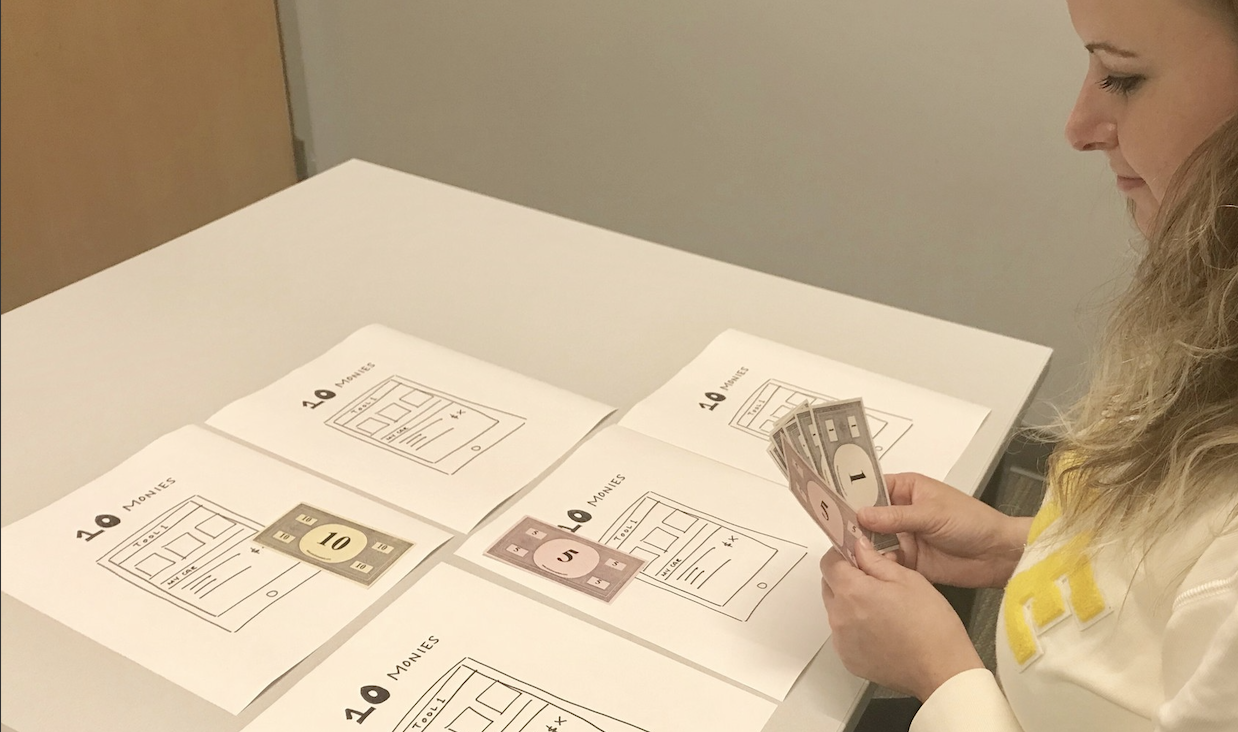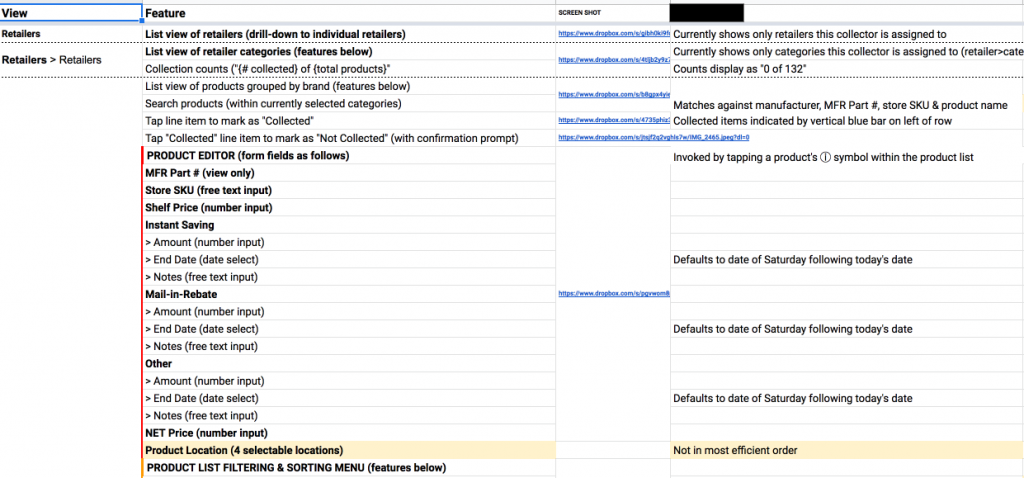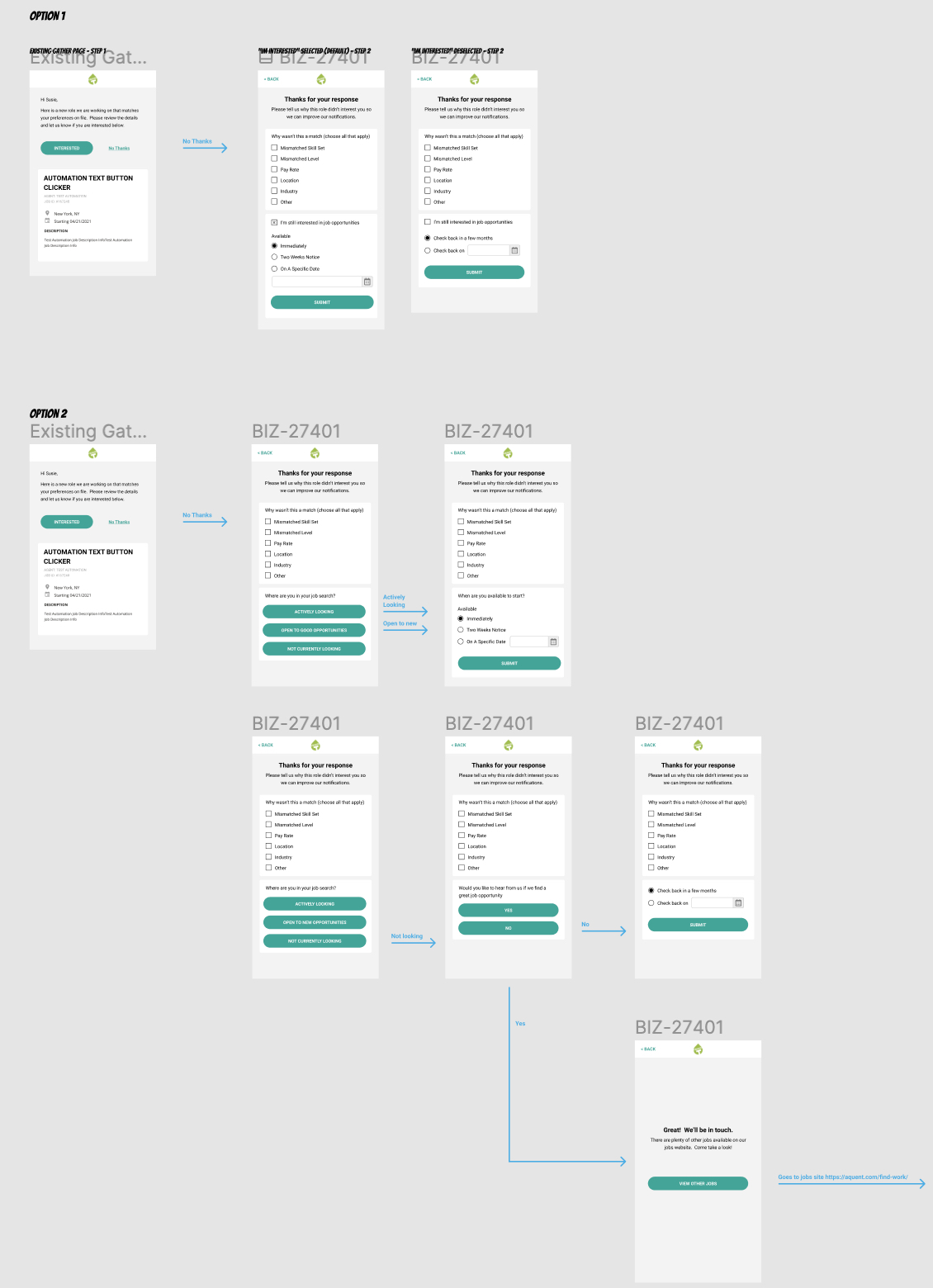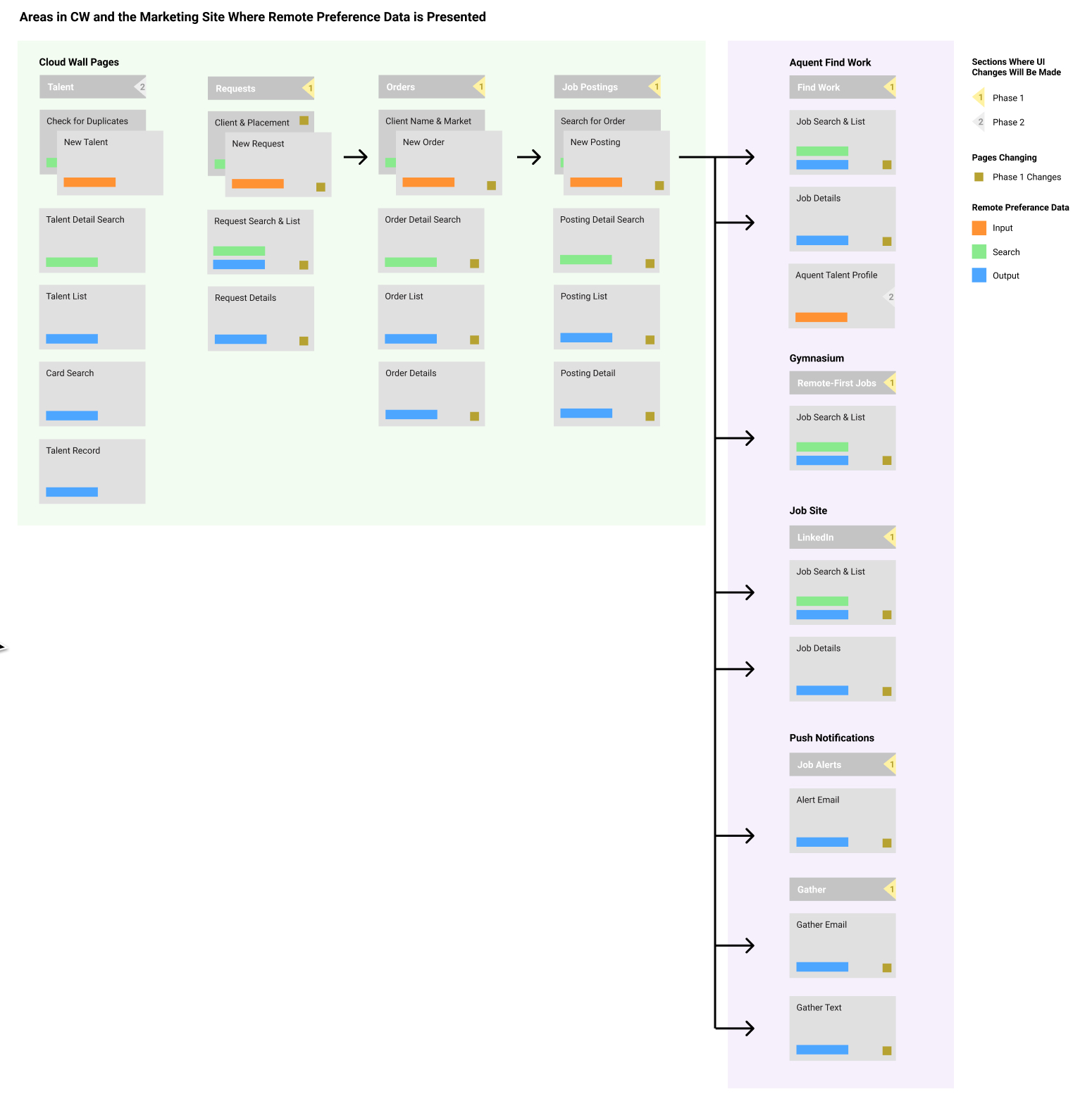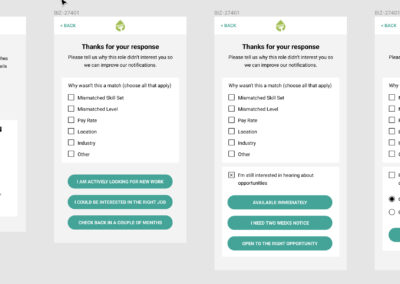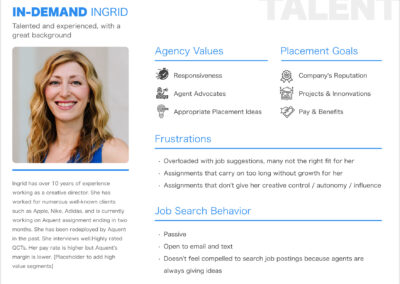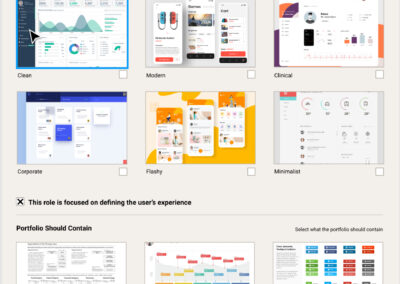01 –
Understanding the problem
Aquent is a staffing firm for designers. The CEO came to us with the goal of engaging with talent via text as mobile communication was more intuitive for our target market and would enable us to find them positions more promptly.
CONSTRAINTS
Reach out to prospective candidates via text without hurting our relationship with them due to unwanted “spam” messages.
Get our four-hundred recruiters to break old ways and engage in a new way of reaching out to talent.
PROJECT TIMELINE
We had three months to design and launch an improved talent outreach solution.
02 –
Taking The Right Approach
Talk with agents in one-on-one interviews to better understand how they interact with talent.
Research interview with a recruiting agent
An example of some of the sms service providers we looked at
Do a deep dive on all the different texting technologies that exist.
We needed something that was strictly opt out compliant in all the countries we do business with.
We tried several different demo products and decided on a product that worked well for our needs.
In the process of doing one-on-one research with agents I came across a huge time saver that allowed them to view candidate credentials quicker, and keep track of who they’d already vetted.
This solution saved the company thousands of person hours per year, cut down on rework, and was voted by the four hundred recruiters in the company as the best addition to their software of that year.
UI of improved talent vetting
A use choses which feature to buy with limited money and costs that reflect the effort involved in building them
A typical list of features used in the research
The research methodology I utilized was called: ‘buy a feature’, and allowed stakeholders and users to pick from a list of features they wanted in the first version of the software based on a cost-per-feature model with limited resources.
We had six stakeholders look over a list of twenty features we could add in the first version of the product. Each feature had a ‘price tag’ attached to it that was based on how much effort it would take to implement.
The users were then given a limited amount of fake money that they would use to purchase the features they would like the most.
The results were compiled and the features the stakeholders purchased helped inform what we decided to work on. This gave the broader user base a feeling of engagement in the new features we were creating and also provided valuable feedback on what would be most useful for them.
I made numerous prototypes and designed wireframes of the mobile UI that the team could view.
Mobile flow for talent updating their interest and availability
Map of disparate sites for rollout
I created flow diagrams that showed how all the pieces of the product rollout fit together.
03 –
Final Results
The solution was a great success. Talent placements with recruiters increased by 5% in three months for those who used the system. This represented an increase of $400,000 a month in review. The revenue numbers continued to grow as recruiter adoption became more widespread.
My time working on this project saw me awarded the ‘employee of the month’ award for my outstanding contribution to not only the solution, but the company as a whole.



